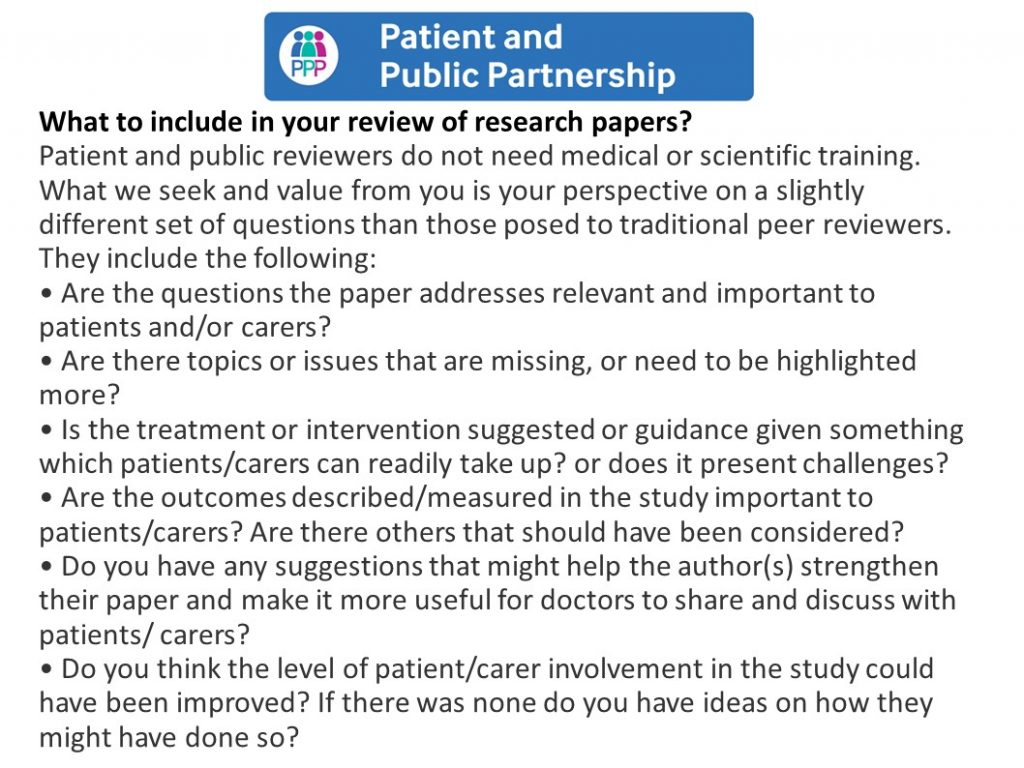- Profile
- Comments 0
- prev
- next
- Website
- Leave a comment
- prev
- next
In a nutshell
By playing a key part in determining what research gets funded and published, peer review has a pivotal role in determining the treatment and interventions patients receive and how medicine is practised. To ensure research is appropriate and relevant to end users, The BMJ now systematically invites patients and the public to review research manuscripts (and some other article types) alongside its peer reviewers. We have a series of research projects planned to evaluate this important initiative.
Goals and intentions
Involving patients and the public in the research process has the potential to increase the quality and value of the research and reduce waste. Many grant funding organisations now incorporate members of the public in their review processes or panels, for example, the UK’s National Institute for Health Research (NIHR) and the Patient-Centered Outcomes Research Institute (PCORI) in the USA. By contrast, biomedical journals still do very little to involve patients and the public in their peer review processes. In 2014 The BMJ adopted an innovative strategy to coproduce its content with patients and the public. To ensure research is appropriate and relevant to end users, The BMJ now systematically incorporates patient and public review of research manuscripts (and some other article types) alongside traditional scientific peer review. Reviews are signed and published alongside accepted articles. We have a series of research projects planned to evaluate this important initiative.
Types of outputs
Video
Review features
-
Notes
Patient and public reviewers are registered on the manuscript tracking software (ScholarOne) and invited by editors to review at the same time as peer reviewers, directly from the platform.
-
Eligible reviewers/editorsAll patients and members of the public can sign up as a reviewer by completing our registration form (https://www.bmj.com/about-bmj/resources-reviewers/guidance-patient-reviewers). There are no inclusion/exclusion criteria.
Transparency
Results
-
MetricsWe recently surveyed patient reviewers to hear their views on the experience (see below). We also track time taken to review and acceptance to review rates.
-
Results summary
We have received a high level of engagement with the initiative. Acceptance to review rates are good and reviews are timely. Reviewers' experiences are largely positive but they have also given us feedback on how to improve their experience. We have published the results from a survey describing early experiences (https://bmjopen.bmj.com/content/8/9/e023357). Further research into the value added by patient and public review is planned.
-
Results URL


Add a comment